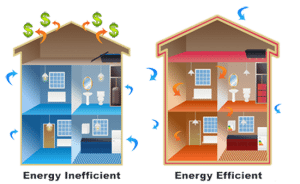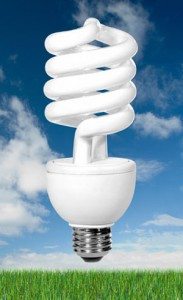 By: Leslie Harris, Interior Designer, Leslie Harris Interior Design and LuxEco Advocate.
By: Leslie Harris, Interior Designer, Leslie Harris Interior Design and LuxEco Advocate.
Since interviewing Jill Salisbury and Susan Fredman about Healthy Home 2010, my interest in the health aspect of homes has increased. Susan commented about the heated debate that took place at one of the Healthy Home’s panel discussions reagarding the dangers of using compact fluorescent lights. Some people likening the bulbs to the Weapons of Mass Destruction and this drove me to research this issue further.
Jill mentioned that a possible problem in homes that are tightly sealed for energy efficiency is the trapping of toxic chemicals from the off gassing used in furnishings or paint. This, along with Susan’s Ah-Ha moment that not all “green” products are healthy, has led to this article.
Do GREEN buildings protect human health from environmental hazards? “Not necessarily” according to the findings at Environment and Human Health, Inc., a non-profit organization composed of doctors, public health professionals and experts specializing in environmental threats to human health.
In the article “LEED CERTIFICATION: Where Energy Efficiency Collides With Human Health” John Wargo, Ph.D., professor of Risk Analysis and Environmental Policy at the Yale School of Forestry & Environmental Studies, guest blogger for Healthy Child Healthy World, and lead author of this study, “LEED – sponsored by the U.S. Green Building Council, an industry group- has a glaring and little-known drawback: It places scant emphasis on factors relating to human health, even as the largely unregulated use of potentially toxic building materials continues to expand. One of LEED’s major accomplishments – saving energy by making buildings more airtight – has the paradoxical effect of more effectively trapping the gases emitted by the unprecedented number of chemicals used in today’s building materials and furnishings. Yet, as the threat from indoor air pollution grows, LEED puts almost no weight on human health factors in deciding whether a building meets its environmental and social goals.”
 EHHI is especially concerned that the LEED program is now providing the false impression that the buildings it certifies protect human health. They recommend that the following changes be made to the Green Building Council’s LEED program that will encourage it to become more health protective.
EHHI is especially concerned that the LEED program is now providing the false impression that the buildings it certifies protect human health. They recommend that the following changes be made to the Green Building Council’s LEED program that will encourage it to become more health protective.
1. Simplify the LEED scoring system and issue rewards within required categories on a 0 – 100 scale.
2. Expand it’s board expertise to include people in the area of human health.
3. Government should categorize building products to identify: a) those that contain hazardous compounds; b) those that have been tested and found to be safe; and c) those that have been insufficiently tested, making a determination of hazard or safety impossible. This database should be freely available on the Internet.
4. The chemical content and country of origin of building materials should be clearly identifiable on building product labels.
5. The Green Building Council should support federal efforts to require testing of chemicals used in many building products for their toxicity, environmental fate and threat to human health.













